Electric Current - 2
Illustration - 3. Find the current in brand BE and potential difference VBD in.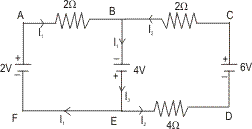
Assume the shown current distribution.
We can choose arbitarily any type of distribution as we like.
Applying kirchoff’s junction law at B (or at E).
We get : I1 + I2 = I3 …………………………… (1)
Applying kirchof’s voltage law in the loop ABEFA: (clockwise direction)
We get :
Applying kirchoff’s voltage law in BCDEB (Clockwise direction)
We get :
on solving (1), (2) and (3) :
For potential drop across VBD :
Let us search from B to D via C :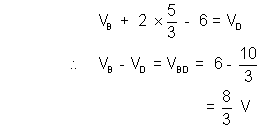
Question :-
route which connects B and D. It is recommended to go via shortest possible route to avoid long calculations and maping problem more complex.
Internal resistance of a battery 
The potential difference across a real source in a circuit is not equal to the e.m.f of the cell,
Dumb question :- Why this happens ?
Solution :- The reason is that charge moving through the electrolyte of the cell encounters same resistance known as, internal resistance of the cell.
It is denoted by r. so, there is a potential drop across the ends of the e.m.f source.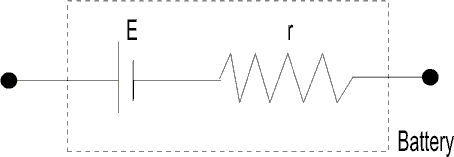
Potential difference (V) across the terminals of a battery -
For an e.m.f source, the potential changes will be obtained as illustrated below :-

Special Cases :-
- It current flows in opposite direction then,
V = E + ir - V = E if current through the cell is zero.
- V = 0 if the cell is short circuited.
Dumb question - 8.
Why V = 0 if the cell is short circuited ?
Ans :-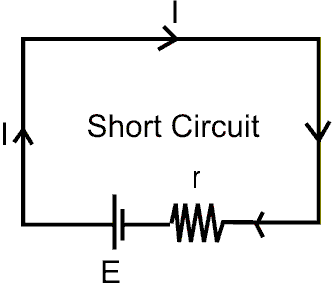
NOw in this case applying kirchoff’s voltage loop law,
Ilustration - In the given circuit
E1 = 10 V, E2 = 8 V, r1 = r2 = 2 .
.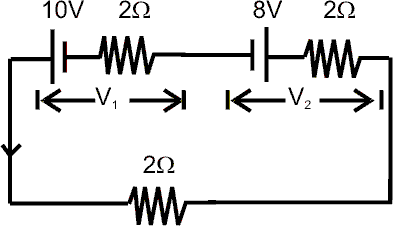
Applying kirchoff’s voltage law in the circuit (moving anticlockwise)
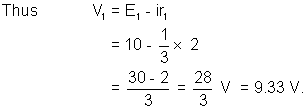

Gruping of Resistances : - In series : Req = R1 + R2 + R3 + …………………. Rn
Equivalent resistance is defined as :
where V = Voltage of battery
I = Current following through battery.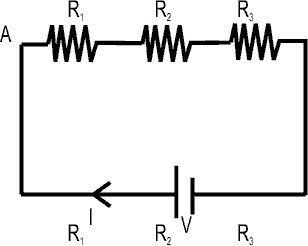
Using kirchoff’s loop rule in clockwise direction we get: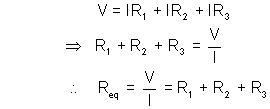
Thus, Req across AB = R1 + R2 + R3 further if battery has any internal resistance it will be added to give total resistance. - In parallel Req = R1 + R2 + R 3 + ……….. + Rn
Here also,
Suppose, in the given figure we have to find Req across AB :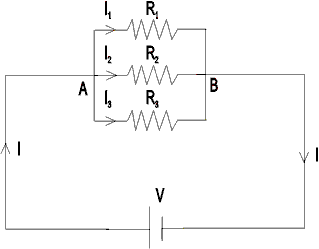
Assuming the following distribution of current as shown.
Applying kirchiff’s Junction Law at A.
(Because potential drop across each are same being in parrallel.)
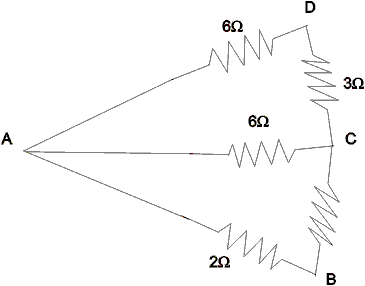
Ans:- Resistance AB and BC are in series.